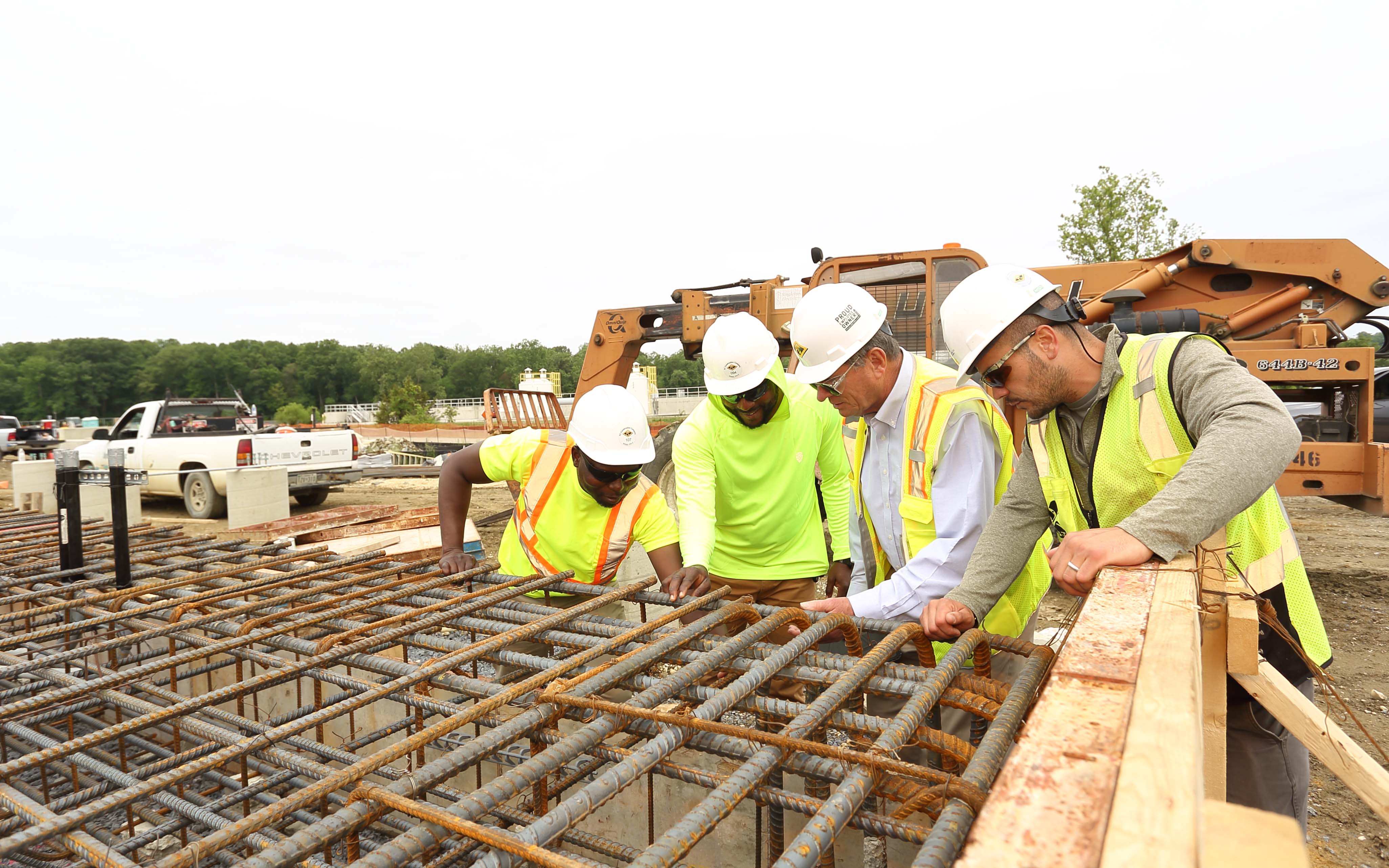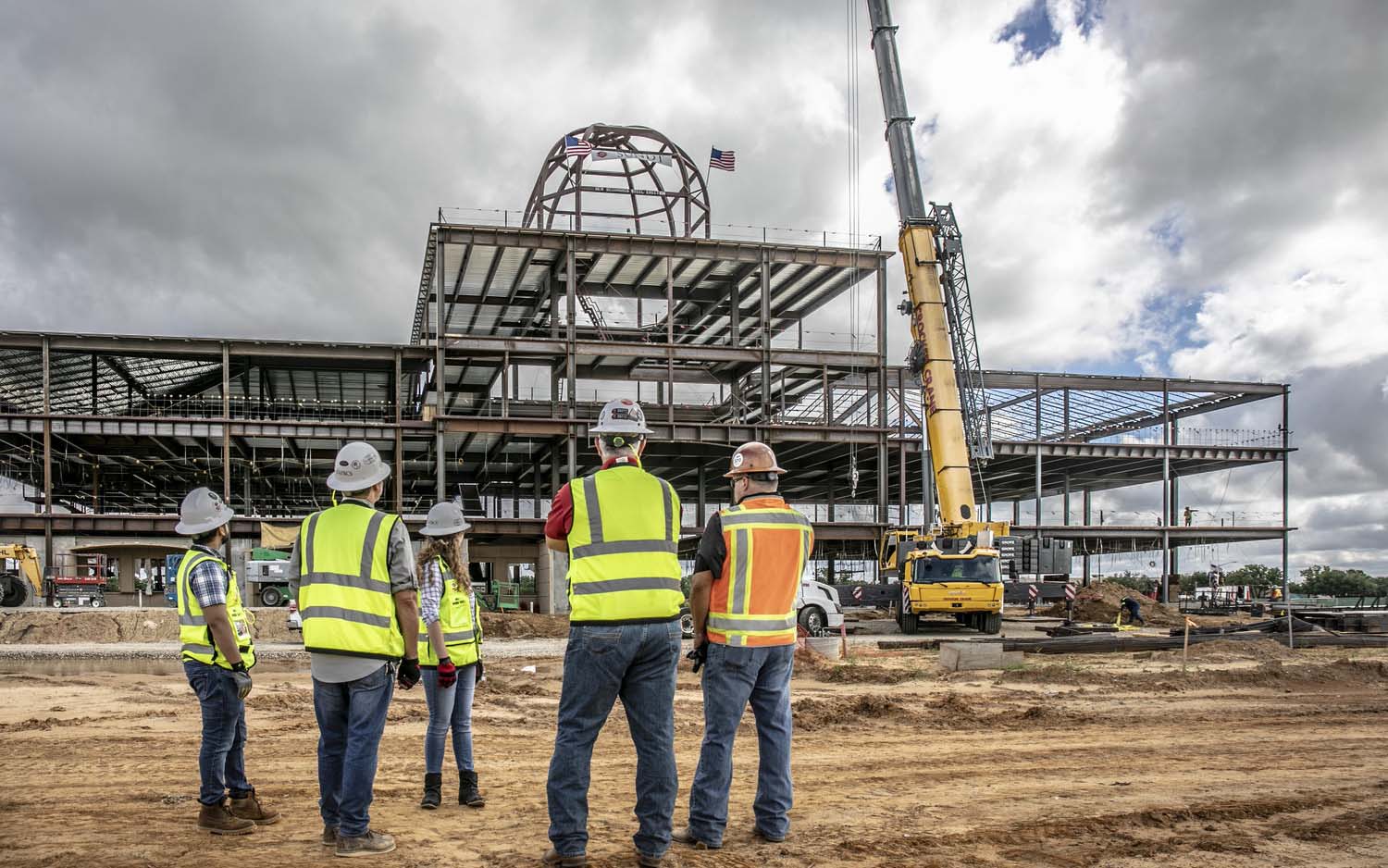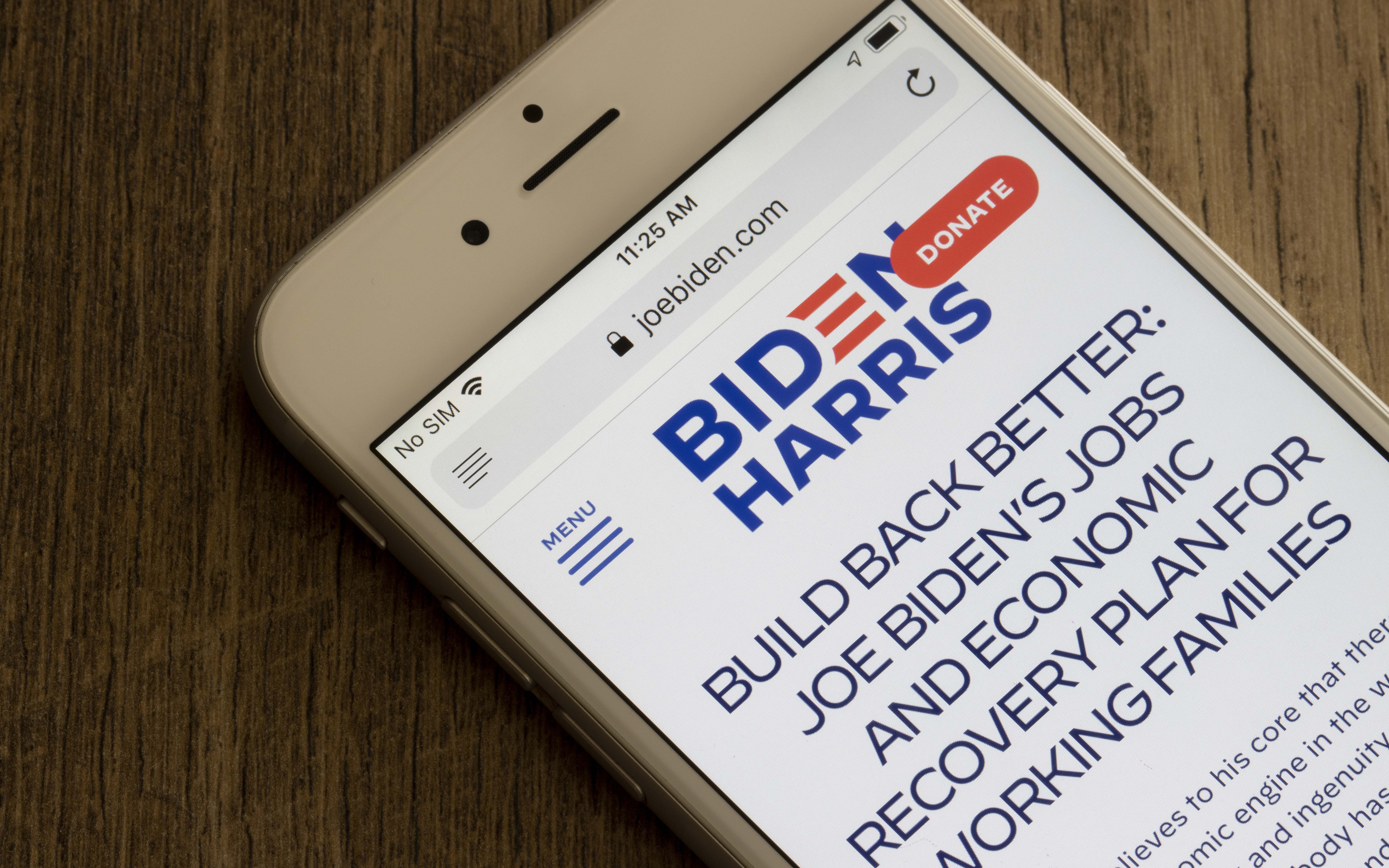President Biden’s Build Back Better blueprint stalls in Congress as nation’s economic woes worsen
November 8-14, 2021
By Wesley Brown
One year after winning the White House in November 2020, President Joe Biden is hoping to push his $1.75 trillion Build Back Better plan across the finishing line along with a companion $1 trillion infrastructure package ahead of the holiday shopping season.
But disappointing losses for the Democratic Party in national elections on Nov. 2 and growing concerns over rising inflation, supply chain bottlenecks, and hiring woes threaten to derail a once-in-a-lifetime opportunity to support the nation’s middle class.
In a White House meeting on Oct. 28, Biden released the final framework of his Build Back Better blueprint during a meeting with key allies and trade groups, hoping to gain broad support to urge U.S. House and Senate leaders to schedule a final vote on his broad agenda. He said the two-pronged infrastructure bill and budget proposal would provide unprecedented federal support for businesses, workers, and families rebounding from COVID-19 pandemic.
“I just finished meeting with a broad coalition of partners on how to address the immediate supply chain backlogs and dealing that — that the world has been dealing with and facing, and we’re facing back at home, and how to make sure we have access to all the products we need — from shoes, to furniture, to electronics, to automobiles — to make sure that we talk about how better to secure ourselves against these future shocks, whether a pandemic, climate change, or other disasters,” said Biden.
But as of Thursday (Nov. 5), Biden and Democratic leaders were reeling from key election losses across the nation against Pro-Trump candidates on Nov. 2. Also, negotiations fell apart with U.S. Sens. Joe Manchin of West Virginia and Krysten Sinema of Arizona after U.S. House Speaker Nancy Pelosi and Senate Majority leader Sen. Chuck Schumer failed to gain a consensus among progressive and conservative Democrats.
To date, no Republicans have signed on to support Biden’s plan, instead arguing that the massive spending agenda will lead to further inflation and increase U.S. deficits by $1 trillion over the next decade.
“The president’s plan would be an absolute gut punch to our family farmers and rural America as a whole, especially as inflation continues to skyrocket under this administration’s watch,” Sen. John Boozman, R- Rogers said in a speech on the Senate floor on the same day a first draft of Biden’s plan was introduced to Congress.
The framework agreement is also the key to unlocking a vote in the House on a $1.2 trillion bipartisan “hard” infrastructure bill, which has already passed the Senate. Progressives want a deal on the social spending plan before voting on the bipartisan bill that funds traditional infrastructure like roads, bridges, broadband, and the power grid.
During a press conference at the 2021 United Nations Climate Change Conference, or COP26, in Glasgow, Scotland, Biden expressed confidence that the Democratic Party would soon unite behind his expansive agenda and bring about a new era of economic prosperity.
“What I do know is — I do know that people want us to get things done. They want us to get things done. And that’s why I’m continuing to push very hard for the Democratic Party to move along and pass my infrastructure bill and my Build Back Better bill,” said Biden. “I think if we — look, think about what we — what we’re talking about here. People are upset and uncertain about a lot of things — from COVID, to school, to jobs, to a whole range of things, and the cost of a gallon of gasoline.
“And so, if I’m able to pass — sign into law my Build Back Better initiative, I’m in a position where you’re going to see a lot of those things ameliorated quickly and swiftly. And so that has to be done,” Biden said one year after he won the presidential election on Nov. 3, 2020.
As Biden continues to hammer out a deal, several top trade groups offered varying levels of support for the Democratic administration. On Oct. 29, the influential National Realtors Association (NAR) applauded the long-awaited framework for Biden’s signature Build Back Better plan released by Congressional leaders that proposes a top-line price tag and an outline of new social programs.
NAR said the $1.75 trillion blueprint includes hard-fought priorities for the nation’s largest trade group like investments in affordable housing and down-payment assistance and spares real estate investment from the most feared taxes. “NAR’s advocacy operation is built for crossroads moments like this one. For the past year, we have educated lawmakers on the effects of misguided and harmful taxes on real estate and the need for affordable housing investment,” said Shannon McGahn, chief advocacy officer at NAR.
“Support for this framework and the bipartisan bill’s passage is far from certain, but this announcement shows increased momentum for the effort to get the bill to the president’s desk,” added McGahn.
According to details from the draft of the 2468-page bill, introduced as House Resolution 5376 by Rep. John Yarmuth, D-Ky., the framework includes a $150 billion investment in affordable housing, a key NAR priority and focus of its advocacy efforts for the past year. Under the agreement, public housing and rental assistance would get funding boosts. The plan would also create more than one million new affordable rental and single-family homes and invest in down-payment assistance.
The White House also said the down-payment assistance under the plan would allow “hundreds of thousands of first-generation homebuyers to purchase their first home and build wealth.” As negotiations continued in recent weeks, media reports suggested that housing provisions might be cut from the bill altogether.
In response, NAR CEO Bob Goldberg joined other housing leaders and key members of Congress near the Senate steps for a press conference calling for the inclusion of affordable housing provisions in the final bill.
“As a nation, we have to find ways to close the supply shortfall,” Goldberg said at the press conference. “Doing so will be particularly meaningful for lower-income households, millennials, and households of color.”
The plan is paid for with new taxes on high-income individuals and businesses, but the most feared taxes on real estate investment were excluded, according to NAR.
“Some of the earlier tax proposals floated would have devastated the real estate sector, which makes up nearly one-fifth of the entire economy,” McGahn said. “This framework has no 1031 like-kind exchange limits, no capital gains tax increases, no change in step-up in basis, no tax on unrealized capital gains, no increased estate tax, no carried-interest provisions, and no 199A limits. The tax provision of this framework is very positive for consumers, property owners, and the real estate economy.”
The latest draft of Biden’s reconciliation budget does not mention State and Local Tax (SALT) deduction relief. Under an earlier proposal of Biden’s reconciliation budget, some Democratic lawmakers supported adding a two-year repeal of the cap on the deduction for state and local taxes. At an estimated cost of roughly $180 billion over two years and $90 billion annually, a SALT cap repeal would cost more than most other priorities under discussion, noted the nonpartisan Committee for a Responsible Federal Budget (CRFB).
To date, top congressional leaders still support an increase in the SALT cap, and a group of bipartisan House members is still demanding a solution. “Congressional leadership can address SALT through an amendment once a bill is under formal debate. We won’t let down our guard on SALT and are still hopeful for a solution,” said McGahn.
The Associated General Contractors of America (AGCA) were also eager for Congress to approve Biden’s infrastructure bill and board social agenda. The nation’s top trade group for the construction industry said nearly one-fifth of U.S. metro areas lost construction jobs in the past year as plans to boost investments in infrastructure languish in Washington and firms cope with shortages, delivery delays and construction materials price increases.
“Many metro areas are having a hard time getting back to construction employment levels from last fall that were already low because of the pandemic,” said Ken Simonson, the association’s chief economist, on Nov. 3. “The challenge is that the economic recovery for the construction industry is being undermined by Washington’s failure to boost infrastructure investments and continuing supply chain dysfunction.”
AGCA officials also urged members of Congress in the House to quickly pass an infrastructure bill that already received broad, bipartisan support in the Senate. They also encouraged the Biden administration to explore ways, like temporarily adjusting hours of service rules for drivers, to unclog shipping facilities that have more goods than drivers.
“Washington leaders have the ability to fix our supply chains now while also investing in their long-term efficiency,” said ASCA Chief Executive Stephen Sandherr. “But nothing is going to get fixed with partisan talk and legislative and executive inaction.”
Meanwhile, the CRFB said HR 5376 would increase spending and reduce taxes by $1.75 trillion or $1.85 trillion over ten years, offset mostly with tax increases on high earners and corporations. However, the framework includes numerous expiration gimmicks to fit all the policies into the topline number, said the Washington, D.C.-based fiscal policy group.
Among many things, Biden’s Build Back Better bill would provide universal pre-K for all three- and four-year-olds and cap childcare costs for six years at a cost of $400 billion and extend the $3,000/$3,600 Child Tax Credit (CTC) for one year and make its full refundability permanent. It would also extend the Affordable Care Act (ACA) subsidy expansion for three years, extend the Earned Income Tax Credit (EITC) expansion, provide ACA subsidies up to 100% of premiums for those in the Medicaid coverage gap for four years, and offer $150 billion of funding for home- and community-based services.
The plans would also expand Medicare to cover hearing benefits at a cost of $35 billion, increase funding for affordable housing by $150 billion, increase higher education spending by $40 billion, expand school meal programs, and provide $100 billion to overhaul the immigration system. It would also provide $555 billion for climate change through a combination of consumer rebates for a variety of clean energy sources, funding for clean energy projects, climate resilience programs, and a new Civilian Climate Corps.
The framework offsets these costs with tax increases on high earners and corporations, increased Internal Revenue Service (IRS) funding, and a repeal of the Trump Administration’s prescription drug rebate rule. Specifically, it would raise $325 billion over ten years from a 15% minimum tax on large corporations based on income reported to shareholders, $125 billion from a tax on stock buybacks, $350 billion from a global 15% minimum tax on foreign corporate earnings, $230 billion from a 5% surtax on income over $10 million and an 8% surtax on income over $25 million.
It would also save another $250 billion by closing loopholes for pass-through income and Medicare taxes, $170 billion from extending a limit on business losses for high earners after 2026, and $400 billion from increasing IRS funding to close the tax gap. It would also save $145 billion by permanently repealing the Trump Administration’s drug rebate rule, which the bipartisan infrastructure bill already delays until 2026.
To see details of the Build Back Better framework, go here: https://www.whitehouse.gov/build-back-better/
PHOTO CAPTION:
1. AND 2. President Joe Biden has laid out the framework of his $1.75 trillion Build Back Better plan and $1 trillion infrastructure bill that Democrats in Congress are hoping to approve before Thanksgiving.
3. The White House on Oct. 28 announced an agreed framework for the Build Back Better reconciliation package that would increase spending and reduce taxes by $1.75 trillion or $1.85 trillion over ten years, offset mostly with tax increases on high earners and corporations.





